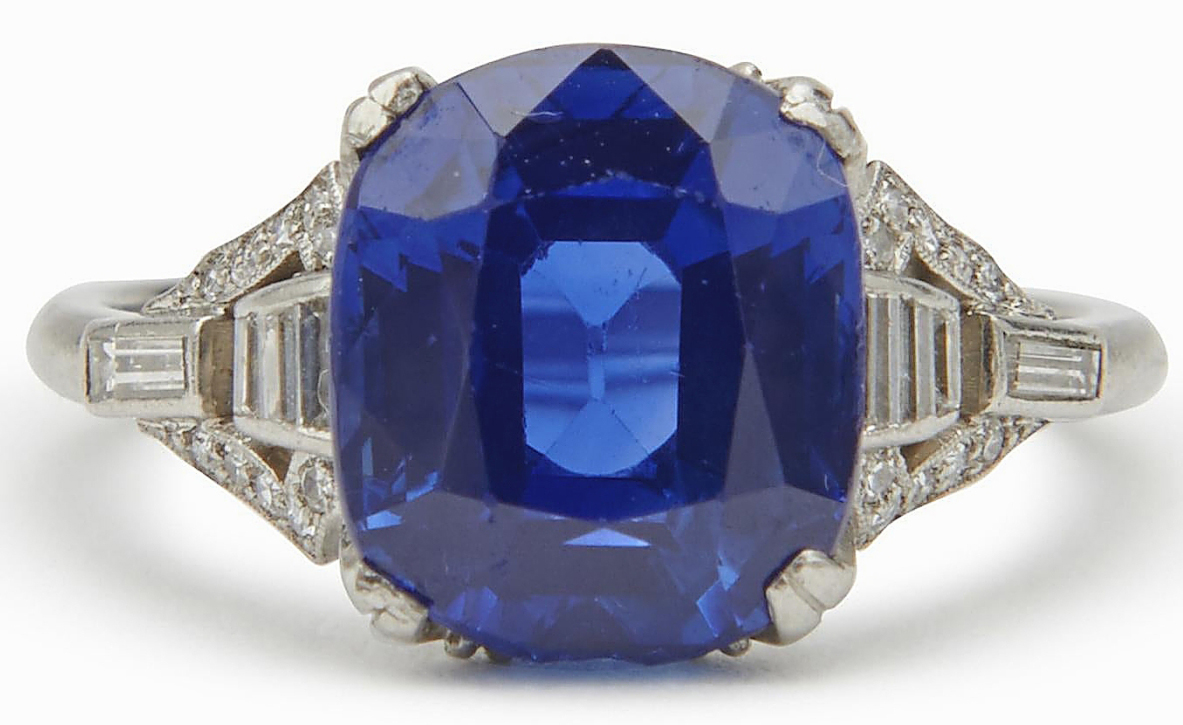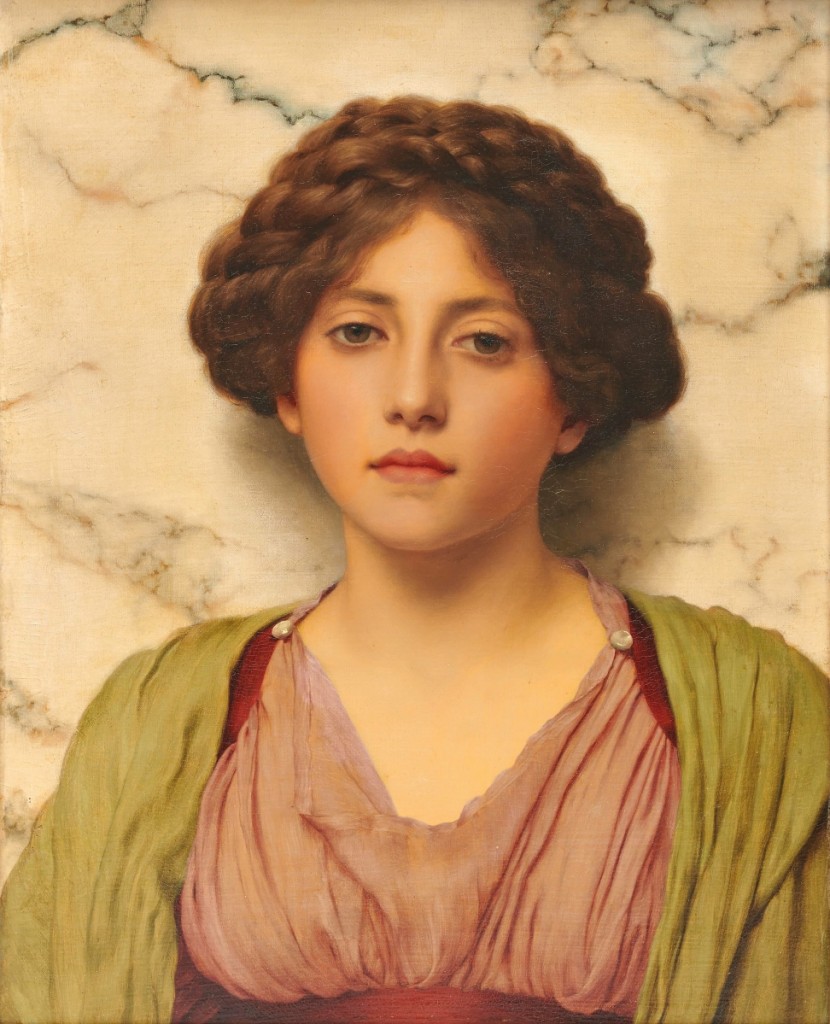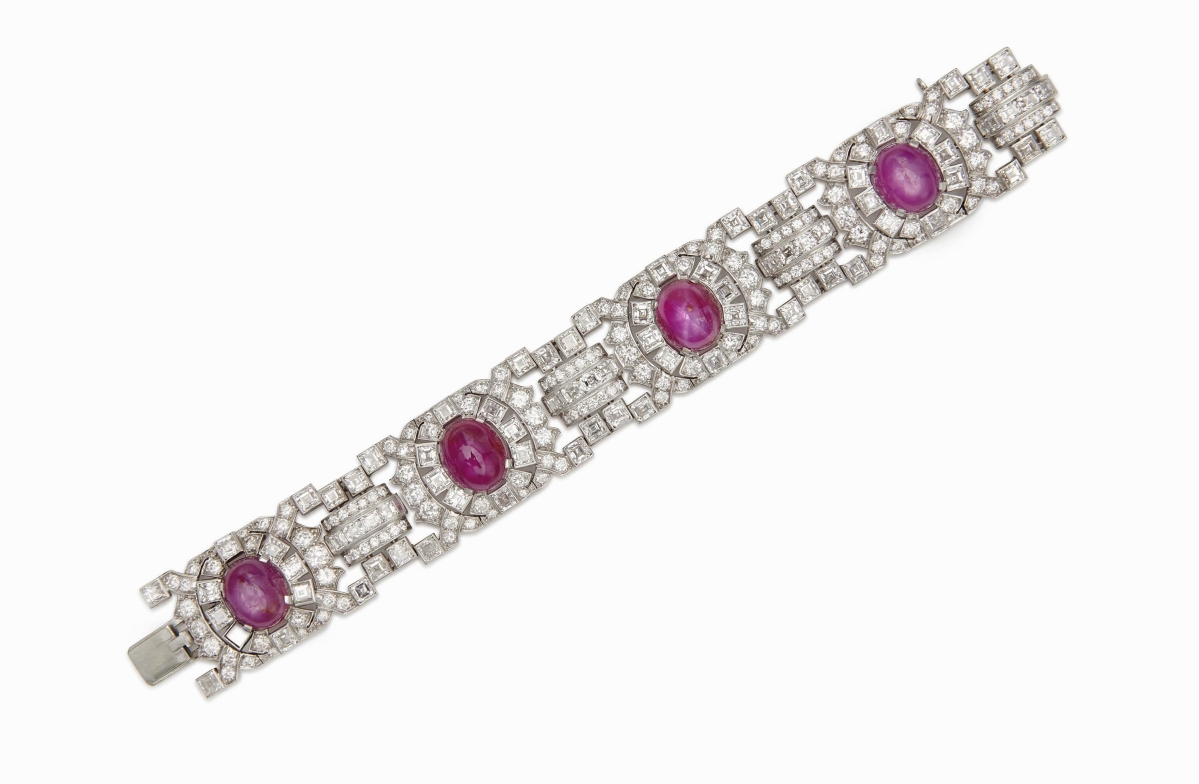
The star of the sale was a platinum Kashmir sapphire ring, set with diamonds. GIA and AGL certifications stated that the sapphire, 4.81 carats, originated in Kashmir and showed no evidence of heating. It realized $237,500.
BOSTON – The June 14 Grogan & Company spring sale seemingly could do nothing wrong. There was no live bidding in the salesroom, but the sale was streamed live and utilized several phone lines and processed numerous absentee bids. A total of 42 percent of items exceeded their high estimates, the sale grossed nearly $3 million – the company’s highest gross to date – two items brought six-figure prices, and more than 50 items brought five-figure prices. The sale, in total, exceeded the high estimate. Fewer than 20 items were passed.
Marilyn Monroe famously sang “Diamonds Are A Girl’s Best Friend” in the 1953 film Gentlemen Prefer Blondes, but she apparently did not know about Kashmir sapphires. Grogan’s sale included several fine pieces of diamond jewelry, including a platinum, diamond and ruby bracelet, which sold for $71,875, but the diamonds were far outsold by the day’s top lot, a circa 1930 deep blue Kashmir sapphire platinum ring by Marcus & Co., set with diamonds, which brought $237,500.
Three AGL and GIA examinations certified that the sapphire, which weighed 4.81 carats, originated in Kashmir and showed no evidence of heating. Jewelry with stones of this quality have always been rare and expensive: Grogan has sold others, also in the six-figure price range. Lucy Grogan Edwards, the company’s jewelry director, said part of the allure of true Kashmir sapphires is their rarity. They all originate from one or two mines in Kashmir (depending upon which author you’re reading), which were worked only for a few years in the 1880s and were depleted by 1887. When the maharaja of Kashmir heard of the presence of the beautiful bright blue sapphires, he posted guards outside of the mines to protect their value and restrict them to the royal family. Subsequent efforts to locate additional mines failed and today the area is dangerous, disputed by India and Pakistan.
Jewelry was strong throughout the sale, but one did not have to spend five- or six-figure amounts. Prior to the sale, Edwards was asked about her personal favorites in the sale. “I really like the pair of Dior potted orange tree brooches,” she replied. “They’re a whimsical, one-of-kind, pair. They’re 18K gold miniature orange trees in planters with hanging round coral beads. I’m sure they had special significance to their owners. Better known for his fashion designs and costume jewelry, it’s unusual to see fine jewelry by Christian Dior. I love the subject and they’re just a creative, fun and eye-catching design. The leaves are detailed and the ‘oranges’ hang from the branches.” She thought the pair was done in the 1950s and they sold, over estimate, for $5,938.
Other jewelry highlights included a platinum, ruby and diamond bracelet with four articulated links, each with an oval cabochon ruby weighing approximately 10 to 11 carats and numerous diamonds totaling 22.50 total carat weight. It earned $71,875. An 18K gold, silver, diamond and pearl bracelet that had been owned by Annie Olivia Tiffany, daughter of Charles Louis Tiffany, sold for $37,500, well over the estimate. Olivia had bought the bracelet at Tiffany’s Paris branch in 1866 and it had descended through the Tiffany family. The gold woven bracelet with a vine design was set with old mine-cut diamonds and eight pearls and was flanked by two rows of millegrain bezel-set old mine-cut diamonds, weighing approximately 9.25 total carat weight. Also finishing within the top ten lots was a platinum, 18K gold, Colombian emerald and diamond ring. The emerald weighed 3.82 carats and the ring, bringing $38,750, was accompanied by two AGL reports.

The catalog described this portrait of an unknown sitter by John William Godward (1861-1922), which finished at $109,375, “This stunningly alive beauty engages the viewer in an intimate yet virginal way. Her deep chestnut braided hair contrasts vividly against the white veined marble and rich colors of her clothing.”
When Edwards was asked if selling fine jewelry without the “normal” presale preview presented any particular challenges, she responded: “The timing is right. Clients have become much more comfortable with the online process and we’re using more photos than we might have in the past, including more close-ups. And I’m showing everything on a model so that people can get a feeling for the scale of the piece. If someone needs to see a piece in person, we’re making that happen. I even set up an appointment for a couple to see an engagement ring on a fire escape outside our building. Whatever we have to do.”
Several paintings started the sale and the second highest-earning example was the largest surprise of the category. It was a 1964 portrait by Gloria Vanderbilt (1924-2019) of “Greta,” a cousin of the artist, which soared far above the estimate, finishing at $53,125 and selling to a local collector, underbid by members of the Vanderbilt family. First place honors for paintings went to an untitled 1909 portrait of a beautiful woman by John William Godward (1861-1922), which drew 15 bids and finished at $109,375. The catalog credits Vern G. Swanson, PhD, for the description, which partially states, “This stunningly alive beauty engages the viewer in an intimate yet virginal way. Her deep chestnut braided hair contrasts vividly against the white veined marble and rich colors of her clothing.”
One of the more unusual offerings, done as a gift and bringing $34,375, was “Para Esther,” a Pablo Picasso color crayon drawing of flowers, signed and dated 1958. It was done on a blank front page in photojournalist David Douglas Duncan’s The Private World of Pablo Picasso. Duncan, known as “Picasso’s photographer,” produced about six books on the artist, was a close friend of Picasso and his wife, Jacqueline, lived nearby in Paris and had free access to Picasso’s home. (Duncan also photographically covered both the Korean and Vietnam wars.) Esther Watson, for whom the drawing had been done, was Duncan’s aunt and financially supported his work and time in Paris. In 1958, Esther was hospitalized and this drawing was a gift to her from Duncan, Picasso and his wife. Duncan had cabled his aunt telling her that “a wonderful surprise” was on its way to her. She received a copy of his book with notes from Duncan and Jacqueline on the title page and this drawing by Picasso on page six.
Esther saved a copy of the three-page “thank you” letter she sent Picasso, writing, in part, “It meant so much to me that the great artist Picasso would take the time to lovingly decorate and autograph a page in Dave’s book just for me; and that in doing so he was sending a thought for my return to health; all this so overwhelmed me that I have no words adequate to express my thanks and gratitude. The flowers that came to me while at the hospital are now only a treasured memory, but your bouquet will stay with me to give me pleasure for the remainder of my life.” The book with the drawing was accompanied by the cable from Duncan to Esther telling her of the “wonderful surprise,” Esther’s copy of the letter she sent to Picasso and a signed postcard sent by Picasso and Jacqueline to Esther in reply to her letter.
Watson kept the drawing and related material and passed it down in her family, eventually to her great-granddaughters, sisters whose father was her grandson, Gerry Williams, an influential New Hampshire midcentury studio potter. It remained in Williams’ studio after his death. The sisters knew of the existence of the drawing but were unable to locate it for a period of time. When they decided to part with it, they were advised to show it to Georgina Winthrop, Grogan’s fine art director, who realized its interest and included it in this sale. Winthrop featured it in the advertising for the auction, and it was included in the promotional materials the company produced.

Also selling for well over the high estimate was a platinum, diamond and ruby bracelet, which sold for $71,875.
Prior to the sale, Winthrop was asked which were some of her personal favorites on offer. One that she selected, earning $31,250, was a pencil sketch by John Singer Sargent, (1856-1925) a preparatory work for his portrait of Grace Elvina Curzon, Marchioness Curzon of Kedleston. “The sketch was done for Sargent’s portrait of the lady, which is now in the collection of the Currier Museum of Art, in Manchester, N.H. It has a fun story to go with it. It was done late in Sargent’s life, and when he was asked to do a portrait of Grace, he declined, saying that he no longer did portraits. But a friend of his, who wanted him to do the painting, arranged a dinner party that Sargent and Grace both attended. Having met her, he so liked the woman that he agreed to do her portrait and it turned out to be his last. He died just three months after completing it.” The sketch was sold by the Grand Central Art Galleries in 1959 and has remained in the family since. Winthrop said that, knowing there would not be a “live” preview, she used additional photographs so clients could feel confident about what they were interested in. After the sale, she said that online bidders were very active, and in fact, were successful on more lots than phone bidders.
The sale included more than jewelry and paintings. There were books, silver, watches, good American furniture and more. Leading the selection of American furniture was an inlaid mahogany tall case clock made by Stephen Taber, New Bedford, Mass., about 1810. Taber was trained in Boston by Aaron Willard but spent nearly all his working life in New Bedford, eventually giving up clock making to be a merchant and trader, at which he was quite successful. The clock sold for $21,250. Also doing well was a pair of Classical carved and gilt conversation benches, which sold for $15,000. On the frame of one of the benches is written “Roxbury, Mass.,” and a similar example is in the collection of Boston’s Museum of Fine Arts.
After the sale, Michael Grogan said that more than 2,000 people live-streamed the sale and that more than 280 invoices were issued for the 468 lots. “It was our best sale ever. To me, that indicated that there was widespread interest in the material. That created a lot of work for the team, answering inquiries about specific items. We were in the right price range with the sort of material our clients are looking for. It also struck me that the overall momentum of the marketplace was very positive. We’re looking forward to the fall sale, and we’ll have some fun things.”
All prices include the buyer’s premium as stated by the auction house. For information, 617-720-2020 or www.groganco.com.
























